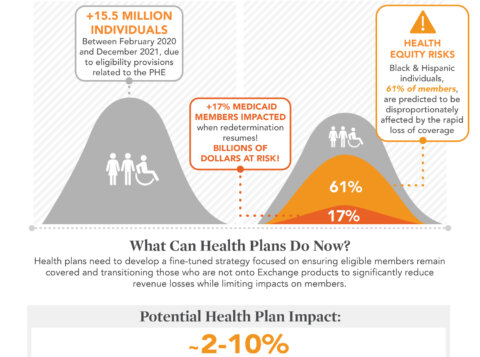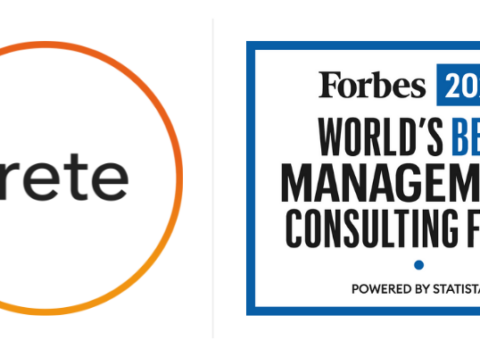The Fight to Lower Drug Prices

The Trump Administration Blueprint to lower drug prices and reduce out-of-pocket costs, known as American Patients First, contains several different elements. At a high level, some of the key focus areas, according to Maulik Bhagat, a managing director in the healthcare practice of AArete, a global consultancy specializing in data- informed performance improvement, are:
- Encouraging pharma manufacturers to reduce brand drug pricing, while helping them retain more share of same;
- Reducing the extent of rebates available to Medicaid FFS and Medicaid MCOs;
- Reducing the extent of discounts available under 340B;
- Allowing more coverage under Part D, encouraging more price negotiation;
- Encouraging use of generic alternatives and biosimilars;
- Moving toward increased value-based arrangements;
- Increasing list price transparency;
- Passing on drug rebates to the patients;
- Imposing a cap on the maximum a Medicare patient will pay out of pocket; and
- Incentivizing/compelling other non-U.S. OECD countries to pay a higher price than they currently do for drugs, to reduce gap between their prices and U.S. drug prices.
Lindsay Bealor Greenleaf, director at healthcare advisory firm ADVI Health, says of most note to managed care, the Administration seeks comment on how the elimination of the copay coupon exclusion from Average Manufacturer Price (AMP) and Medicaid Best Price determinations would affect drug prices. “If this policy change is enacted, manufacturer discounts provided through copay coupons would be treated the same as other discounts and rebates, and thereby serve to lower a drug’s AMP and Best Price,” she says. “This policy change could effectively eliminate the financial incentive to provide copay coupons.”
Also, notable for the commercial market, the blueprint seeks comment on policies that could be revised to promote greater adoption of value-based arrangements. “Additionally, the proposed changes to the rebating process for federal programs could influence list prices and thereby affect commercial contracting,” Bealor Greenleaf says.
Impact on Healthcare Stakeholders
Some of the reforms under consideration would have implications across many healthcare stakeholders, including health plans and providers, according to Megan
Olsen, senior manager, Avalere Health, an Inovalon Company. “Notably, given the wide spectrum of policies being considered, there may be both risks and opportunities within the blueprint for any particular stakeholder,” she says. “For example, while some of the initiatives may provide health plans with additional tools or flexibilities to manage the drug benefit, the potential changes to rebating practices could cause some disruption. The reforms around physician-administered drugs (i.e., Part B drugs) may create additional burdens for providers in terms of patient access (e.g., step therapy), while some providers may benefit from a new third-party coordinating the management and distribution of these products.”
Rebates available to managed care companies could be reduced and potentially companies could be mandated to pass them on to patients, especially where there is patient cost sharing involved, according to Bhagat. “At the same time, it could give them more freedom and flexibility in negotiating lower drug prices, influencing utilization based on use of biosimilars and generics to reduce their costs, etc. It will also result in increased value-based contracts, now incorporating drug spend and pricing.”
If the U.S. healthcare system could get more competition going while reducing or eliminating foreign governments from free riding on the current system, managed care would benefit, according to John Sarich, an industry analyst and vice president of strategy at VUE Software, a firm that specializes in innovating and automating business processes for the insurance industry. “Right now most of the underlying cost of proprietary drugs is funded by the U.S.,” he says. “Managed care would need to get more of this underlying cost pushed back to the free riders in order to get under control.”
Plan of Action
At this stage, Bhagat believes, healthcare executives should prepare for some change, and keep strategies and options on hand. “There is skepticism that the measures thought about per the [blueprint] aren’t comprehensive enough to actually bring down drug prices and impact the profits pharma companies and PBMs are raking in,” Bhagat says. “Also, from a healthcare payer and provider standpoint, there is some impact likely through rebate reductions, formulary choices, 340B discount reductions, etc.— but these don’t really impact pharma companies and PBMs materially. It is likely that the real impact on payers and providers will also be limited.”
Experts say there are six things all healthcare executives should know about the blueprint:
1. Action is underway. The Administration has already taken action on several fronts, Olsen says. “While some of the earlier actions may represent more incremental reforms, additional reforms are likely to be revealed in the coming months.”
2. There is significant pressure to get this right. “There is currently intense public and political focus on drug pricing—it is a top issue among voters heading into the midterm elections and the Administration has established lowering drug prices as a key goal. Absent significant near-term change that delivers immediate benefit to patients, the pressure for reform is unlikely dissipate,” Olsen says.
3. All stakeholders play a role. While these reforms are focused on the topic of drug pricing, manufacturers are not the only stakeholder affected, according to Olsen. “In fact, across many of the policies the administration is pursuing, health plans and providers will be implicated as well. It is important for all stakeholders to understand the risks and opportunities,” Olsen says.
4. It does not appear that the proposed changes to this plan will fundamentally change the rules of competition. “Instead, the focus appears to be on correcting system inefficiencies and limiting unfair influence, trade inequities, and regulatory burdens for life sciences companies, according to Ed Francis, a senior director with West Monroe Partners, based in Chicago, and leader of the firm’s services and solutions.
5. Pharmaceutical and medical device companies should reap the benefits. “If President Trump is to make material progress implementing his plan, then pharmaceutical and medical device companies should benefit, as the intent of the plan appears to address system failures while continuing to reward innovation,” Francis says.
6. Downstream value chain players such as PBM’s, pharmacies, and payers should expect continued massive consolidation and perhaps the elimination of profit levers such as rebates and complicated chargeback mechanism. “Furthermore, indirectly related to the program, it also appears the atmosphere and perhaps openness from the justice department to look positively at M&A activity is right for new entrants such as Amazon to come forward with a very different business model and asset base, and for substantial vertical consolidations such as Aetna and CVS,” Francis says.
Healthcare executives are the point people on reforming the cost structure of all pharmaceuticals, and it’s time to step up, Sarich says. “The structure of the pharma industry from manufacturer to patient is full of middlemen that get a cut of the pricing. The executives need to understand that the kickbacks and rebates have to end. These leaders need to act as watchdogs over the process, and not beneficiaries. This will be a hard reality to change.”
















































































